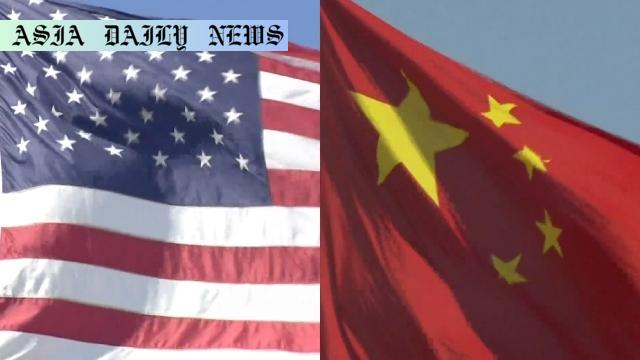tariffs: China’s additional tariffs of 10-15% on US coal, LNG, and other goods highlight escalating tensions in the trade war.
China’s additional tariffs of 10-15% on US goods take effect Monday.
Targeted goods include US coal, liquefied natural gas (LNG), and agricultural machinery.
The escalating trade war could have global economic implications.
Observers are uncertain if talks will prevent further escalation.

Introduction: An Escalating Trade Conflict
On Monday, China’s newly announced tariffs on United States goods are officially taking effect. This latest development is seen as Beijing’s response to U.S. President Donald Trump’s administration, which imposed new duties on Chinese imports. As the two economic giants engage in this tit-for-tat tariff battle, concerns about a full-blown trade war and its implications for the global economy are mounting.
Details of the Tariffs
The new Chinese tariffs are far-reaching, targeting key American exports with tax rates ranging from 10% to 15%. Highlighted items include coal, liquefied natural gas (LNG), crude oil, and large-engine automobiles. With this move, China seeks to hit various sectors of the U.S. economy, from energy and agriculture to manufacturing. Agricultural machinery, a stronghold of the American Midwest, has also been caught in the crossfire.
Economic Implications
The imposition of additional tariffs escalates trade tensions between the two largest economies in the world. If not addressed, these measures could spiral into a full-scale trade war, potentially disrupting global supply chains and damaging economies beyond just the U.S. and China. Many experts believe that the uncertainty created by this tariff battle could deter investment, slow economic growth, and increase costs for businesses and consumers worldwide.
What’s at Stake?
The stakes in this trade standoff go beyond economics. Politically, both nations are vying for global influence. For the United States, the tariffs are part of an effort to address what President Trump describes as unfair trade practices by China. For Beijing, the measures represent a test of its resolve and an opportunity to showcase its ability to retaliate effectively.
Chance of Negotiation?
While the situation seems dire, observers remain cautiously optimistic about the possibility of dialogue. Both nations have much to lose, and it is in their best interests to find a resolution. Whether discussions between the two economic powerhouses will materialize – and succeed – remains to be seen.
Conclusion
As China’s additional tariffs on U.S. goods take effect, the global markets are bracing for the impact of this development. This trade conflict underscores the need for multilateral cooperation and negotiation to prevent further damage to the global economy. The coming weeks will reveal whether this confrontation escalates into a prolonged conflict or if diplomatic measures will prevail.



Commentary
Analyzing the Current Trade Conflict
The imposition of new Chinese tariffs on American goods marks another significant chapter in the ongoing trade war between two global economic superpowers. What makes this situation particularly alarming is the scope of the tariffs and their potential to impact industries that are integral to the economies of both countries. Beyond the immediate economic fallout, this development also highlights the deeply entrenched political and ideological rifts that underpin U.S.-China relations.
Global Repercussions Cannot Be Ignored
The global economy does not operate in isolation, meaning the ripple effects of this trade war are inevitable. Rising tariffs translate into higher costs for businesses, reduced consumer spending, and disruptions in the supply chain. Developing nations with economic ties to both the U.S. and China are particularly vulnerable as they struggle to navigate this increasingly unstable landscape. The situation emphasizes the need for both countries to approach this standoff with not only their national interests in mind but also their global responsibilities.
Hope for Diplomatic Solutions
Despite these challenges, there is still hope. History has shown that even amidst heightened tensions, diplomacy remains a viable path. Both China and the United States have too much to lose from prolonging this conflict, and it is in their best interests to seek common ground. The coming months will be critical, and the decisions made during this time could shape the global economic landscape for years to come.